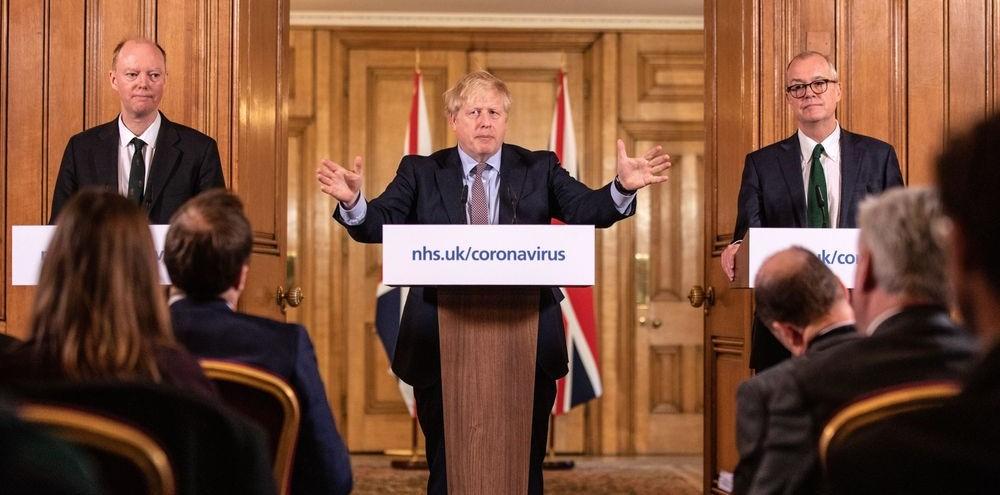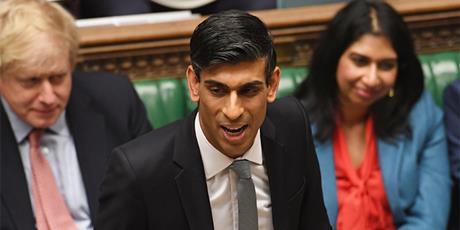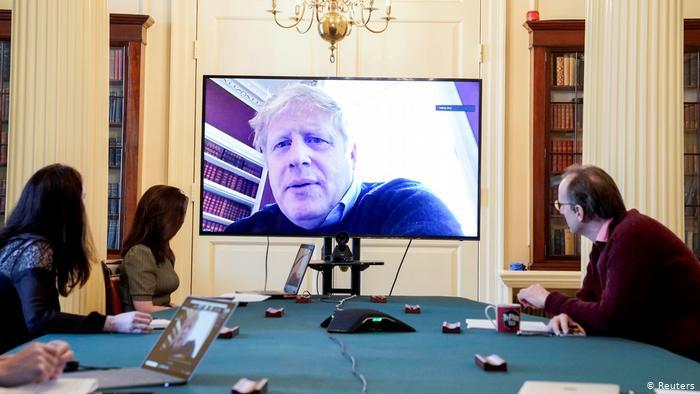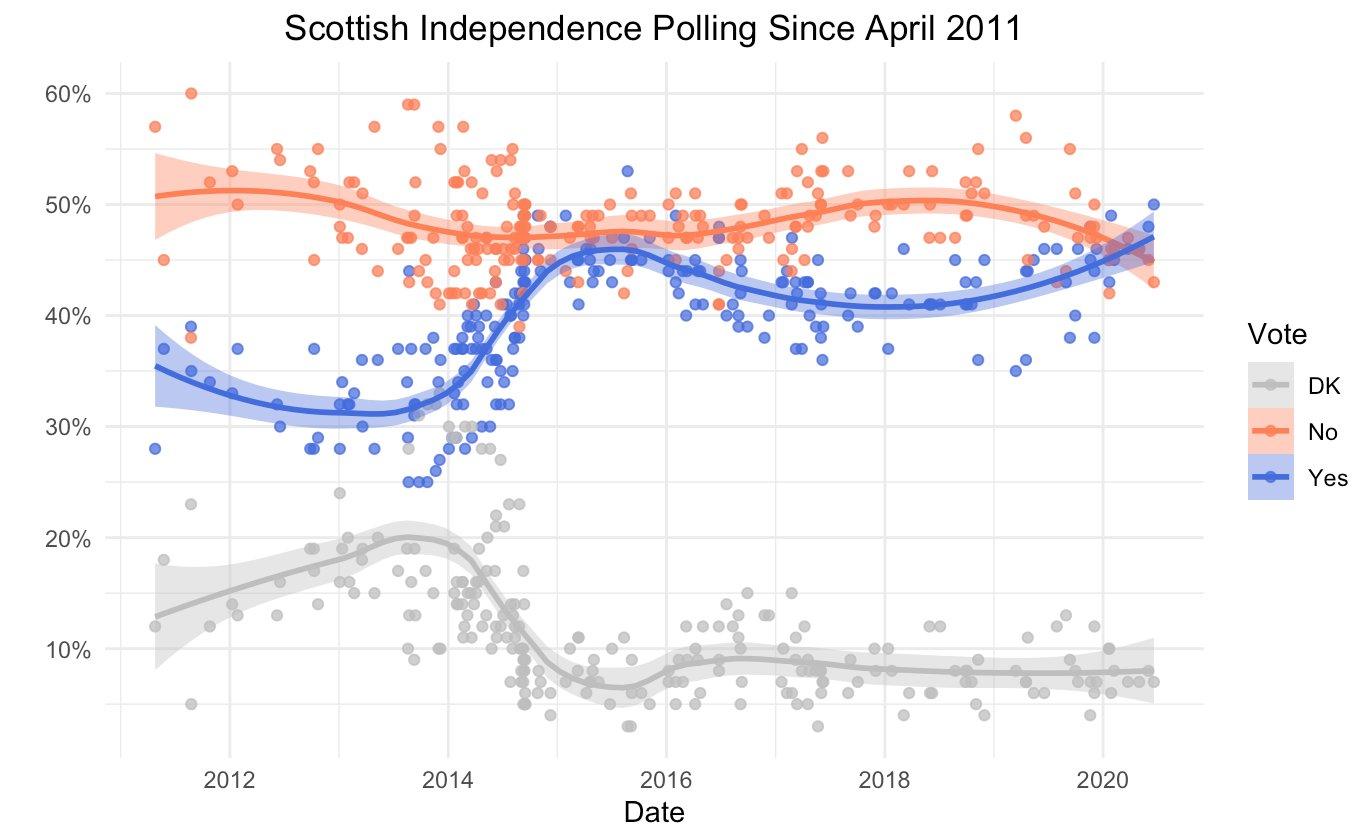Covid-19: What went wrong in Britain
The British government did not have a “good crisis”. On a raft of metrics, the UK’s coronavirus outbreak ranks among the worst in Europe, if the not the worst altogether. To date, official counts have recorded 300,000 coronavirus cases and 42,000 deaths; but excess mortality data suggest the latter figure is probably closer to 62,000. It’s also increasingly clear that the pandemic picked up pace a week or two after it hit continental Europe, but the head-start quickly slipped away amid the dithering initial response of the government.
Yet Britain’s poor performance is not simply about the mistakes and miscalculations made at the top of government in those crucial few weeks in March. It turns out that, when it comes to viruses, states are not that different from people: they also have co-morbidities. It’s in this sense that the story of Britain’s coronavirus crisis is also one of a deeper decay of the British state – its machinery hollowed out by austerity, hindered by patchy local governance, and wholly absorbed by the endeavor of delivering Brexit. Finally, the public health crisis has also turned into a public trust crisis. The political fallout of coronavirus has in fact widened the rift of mistrust between the governed and the government, and risks destabilizing Johnson’s administration as it embarks on stormy economic and political waters.

The initial response: playing catch-up
The government’s approach to the coronavirus over the first months of the crisis followed a familiar playbook. Confronted with radical uncertainty – around the virus’ transmission, its mortality rate and the efficacy of policy interventions – the taskforce behind Britain’s Covid-19 strategy consistently avoided acting on worst-case scenario assumptions. Then, when they reversed course and implemented the measures they resisted at first, it was often too late for them to be effective. With the benefit of hindsight, we now know that one of the key mistakes was underestimating how much farther containment could have gone than the conventional toolkit for influenza-like epidemics. “The national risk register, the assumptions of officials and the civil service and the plans that were in place were based on influenza,” said Alex Thomas, program director at the Institute for Government think tank. Those assumptions were shelved way too late in the crisis.
Take for instance the case of diagnostic testing. The minutes of the government’s Scientific Advisory Group for Emergencies (SAGE) meetings reveal that on February 4th the government still assuming that testing capacity “cannot be substantially increased during this winter influenza season”. Later that month, SAGE had all but given up on mass testing and contact tracing, concluding that existing resources would only allow to test and trace the contacts of five positive cases per week. The issue of insufficient test numbers reappeared on the agenda only in mid-March when the government changed tack, heeding – belatedly – the WHO’s advice to “test, test, test”. Yet the early lack of focus on diagnostics held back the rollout of testing.
Amid the most acute phase of the crisis, authorities had to deal with shortages of swabs and reagents, and little groundwork had been laid to make use of private labs’ and universities’ resources: even the animal health agency’s offer to share staff and lab capacity went unanswered. To get an idea of the likely costs of such delay, it suffices to say that testing for staff with covid-19 symptoms in the National Health Service (NHS) started only on March 27th – for workers in adult social care, on April 15th.
The development of a lockdown policy followed a similar trajectory. As European countries introduced stay-at-home legislation, the British government was still working on flawed assumptions, including the now infamous “herd immunity” concept. By the second week of March, Italy and Ireland had already imposed a lockdown; Britons were gathering at a four-day horseracing festival in Cheltenham.

The UK eventually followed the rest of Europe’s lead – but only on March 23rd. “I wish we had gone into lockdown earlier, I think that it’s cost a lot of lives,” admitted last week John Edmunds, a professor of epidemiology and member of SAGE. Perhaps even more significant than this assessment was the silence his words were met with from the government and its political allies. While some policy-makers and scientists may still be cautious in passing judgement this early on, there is a sense that Edmunds just said the quiet part out loud: Britain got it badly wrong.
Delays have been even more egregious with other interventions. Quarantine on inbound travelers was imposed on June 8th, whereas serological studies suggest that the bulk of the “importation events” – over a thousand, and mostly from continental Europe – took place in March. For mandatory face coverings on public transport, England had to wait until June 15h; in Scotland, Wales and Northern Ireland, the advice to wear masks is still not legally enforceable. The NHS’s contact-tracing app, once hailed as “world-beating” by Prime Minister Boris Johnson, won’t be operational until the winter. Whether or not any combination of these interventions could have made a difference if implemented earlier, the overwhelming impression is that the government held back from shooting every arrow in their quiver at the pandemic.
We should also be clear that not all parts of the response were poor. The income and employment support schemes have won the Chancellor of the Exchequer Rishi Sunak support from businesses, unions and the public alike. It is fair to say that the economic response was generally not perfect, but pretty good.

The state’s machinery: policy-making the shadow of large solutions
When a definitive account of the government’s response is written – perhaps, as it’s been suggested, in a public enquiry – we will all have the elements to weigh up bad choices and bad luck, blunders and systemic faults, contingencies and inevitabilities behind the toll of coronavirus in the UK. It is however increasingly apparent that, whatever the effect of individual choices, the state machinery that took charge of the emergency was a less resilient one than many external observers would expect of Britain. One way to think about state performance in the crisis is through the lenses of Aaron Wildavsky’s Law of Large Solutions: The observation that as government initiatives grow so large as to crowd out all the policy space and focus, they end up creating more problems than they were meant to solve. The unwieldy reforms that invested the British state over the past years – austerity, devolution and Brexit – have indeed shaped profoundly its capacity to manage an emergency, and often for the worse.
The paradigm that dominated the past ten years of public sector reforms, austerity, is a clear example of this phenomenon. According to Colin Talbot, Emeritus Professor of Government at the University of Manchester, “austerity had two big impacts: making the crucial parts of the public sector which were needed to respond to the virus on the ground weaker, and the central planning apparatus was also weakened.” On both accounts, the pandemic seems to have highlighted that it’s exactly the “slack” in the system that the savings agenda took aim at – stockpiles of equipment, spare capacity, contingency planning – that can make a difference in a crisis. Instead, by the time the pandemic hit, key parts of the state were functioning at minimum operating capacity.
In particular, cuts fell disproportionately in some of the less eye-catching areas of public spending, which appeared expendable in normal times. For example, while funding for the politically sensitive NHS was ostensibly protected, a number of public health functions were transferred to local government, which bore the brunt of the cuts since 2010. In addition, cash-strapped local councils were left in charge of the social care system, which would go on to become a sore spot in the pandemic as hospitals scrambled to free up bed capacity by discharging (untested) patients to care homes.
The issue with local government however runs deeper than funding: the highly centralized response to the pandemic has also highlighted institutional faults in Britain’s devolution settlement. Or rather, England’s devolution settlement. Paradoxically, the relationship between central and local government in England was arguably more dysfunctional than coordination with the devolved governments in the home nations, in spite of the underlying political tensions between London and Edinburgh.
An endless list of local government reforms in the last decades has in fact left behind barebones territorial institutions in England, fracturing competences between agencies and across levels of government. Public health, for instance, has been caught up in the institutional patchwork of English territorial governance, with directors of public health within local authorities overseeing vaccinations and immunizations, while communicable diseases control falls in the remit of a governmental agency, Public Health England (PHE). In this context of muddled accountabilities, London essentially decided to handle the crisis as a top-down affair – and a clunky one at that. Once again, the test-and-trace fiasco is instructive: the government centralized testing in just three diagnostic centers and partnered sooner with Deloitte, an accountancy firm, than with the councils’ personnel who would normally deal with local disease outbreaks.
There’s no better example of a “large solution” getting in the way of everything else than Brexit. It is perhaps emblematic that the first case of coronavirus in the UK was confirmed on 31 January: the day Downing Street was hailing Britain’s official departure from the European Union. According to some, Brexit actually might have helped to deal with coronavirus, in that through the trials and tribulations of the process the government “exercised and developed the muscle for preparing to respond to a crisis,” as Thomas put it. However, it is hard to deny that Brexit was also a huge distraction, sapping focus and resources away from a developing crisis. A recent investigation by Simon Walters for the Daily Mail has revealed that the government’s Threats, Hazards, Resilience and Contingency Committee was put on hold by former Prime Minister Theresa May in 2018 to focus on Brexit planning, and was scrapped altogether by Johnson when he took over in July 2019.
Operationally, the endeavor of leaving the EU was taking up most of the bandwidth of government right through February and early March. “It’s pretty clear from all the reports that the government was totally obsessed with that – there were tens of thousands of civil servants drafted for working on Brexit-related issues. A lot of routine stuff was being neglected, never mind responding to a possible pandemic,” said Talbot.
The political fallout: a breakdown of trust
The British pride themselves on their self-restraint in the face of adversities – their “stiff upper lip”. True to form, the public’s response was orderly and unfazed, in spite of an implementation of the lockdown leaving much to be desired. By and large, Britons were on their best behavior: they stayed at home, they clapped for key workers every Thursday, and stuck to their allotted hour of government-approved socially-distanced outdoors exercise. The public was even willing to cut the government some slack, in spite of the rapidly growing toll of the virus. After all, Downing Street was putting sober scientists front and center of their communication, and even Johnson struck a more credible tone than his American counterpart, to whom he has often been compared. When the PM and other members of the cabinet fell ill with the coronavirus around the end of March, people rallied around the government. The administration’s approval ratings skyrocketed: for a while, it seemed like they would come out of the crisis politically unscathed, if not even strengthened.

And then came the Cummings saga. On May 22nd a joint investigation by the Daily Mirror and The Guardian revealed that the Prime Minister’s advisor Dominic Cummings and his wife, both ill with coronavirus, had driven over 400km to his parents’ country house near Durham at the end of March. The story uncovered a series of additional breaches of the stay-at-home orders: most infamously, a 40km car journey to a local beauty spot in Barnard Castle on April 12th, at the height of the lockdown.
Boris Johnson refused to fire Cummings: widely credited as the architect of the Leave campaign’s victory in the 2016 Brexit referendum, the divisive Downing Street advisor was deemed simply too important to let go. The story dominated the national conversation for weeks, and seemed to tap into a sense of unfairness and double standards that few were willing to stomach after the sacrifices of lockdown. There is even some evidence that Cummings’ impunity may have been interpreted by some members of the public as the green light to relax compliance with lockdown rules.
While the effect of the public relations disaster on people’s behavior is still an open question, the mood did change entirely thereafter. In the weekly displays of appreciation for key workers, which had once gone as far as to include “clap for Boris” sessions from the most zealous supporters of the PM, the government began to be booed. Around the same time, polls started to turn. According to the YouGov poll trackers, support for the government’s handling of coronavirus plummeted from 72% at the start of lockdown to 39% in the latest June round – the joint-lowest figure among the 22 countries polled. Overall government approval fell from 52% at the start of lockdown to 34% in June, with disapproval rising from 27% to 46% over the same period. The Conservative Party’s lead over Labour shrank from 24 percentage points to eight, and Johnson’s net ratings have dipped into negative territory for the first time since his election in December.
Whether the Cummings saga was truly a turning point or simply served as a catalyst for simmering dissatisfaction, it gave the crisis a political dimension that – as many parts of people’s lives – had been put on hold with the lockdown. In the last few weeks, as Britain finally crawled its way out of the crisis, the government has seemed desperate to change the topic of conversation away from Covid-19. To this aim, “culture wars” have been wheeled out in full force: from further posturing in the Brexit negotiations to a manufactured row around Churchill’s statue, to the announcement of cutbacks on international development spending. Yet, there’s no escaping the fact that Britain experienced the deadliest coronavirus outbreak in Europe and that it has still relatively high daily contagions.
Politically, things aren’t looking healthy either. With a steep recession around the corner, yet another Brexit cliff edge a few blocks away and the prospect of a Scottish independence referendum not much further down the road, Johnson’s government may soon come to regret the political capital squandered over the past months.

